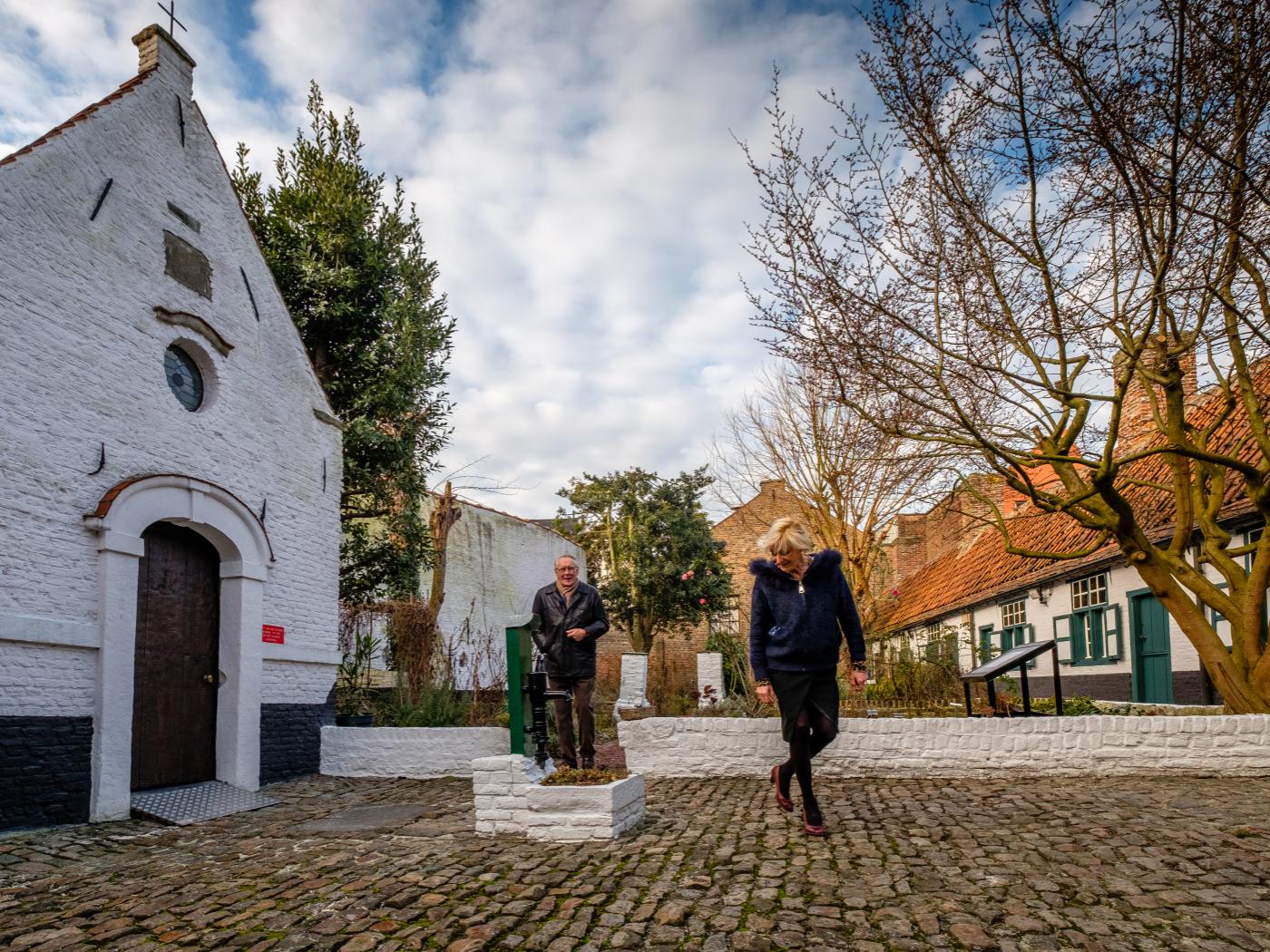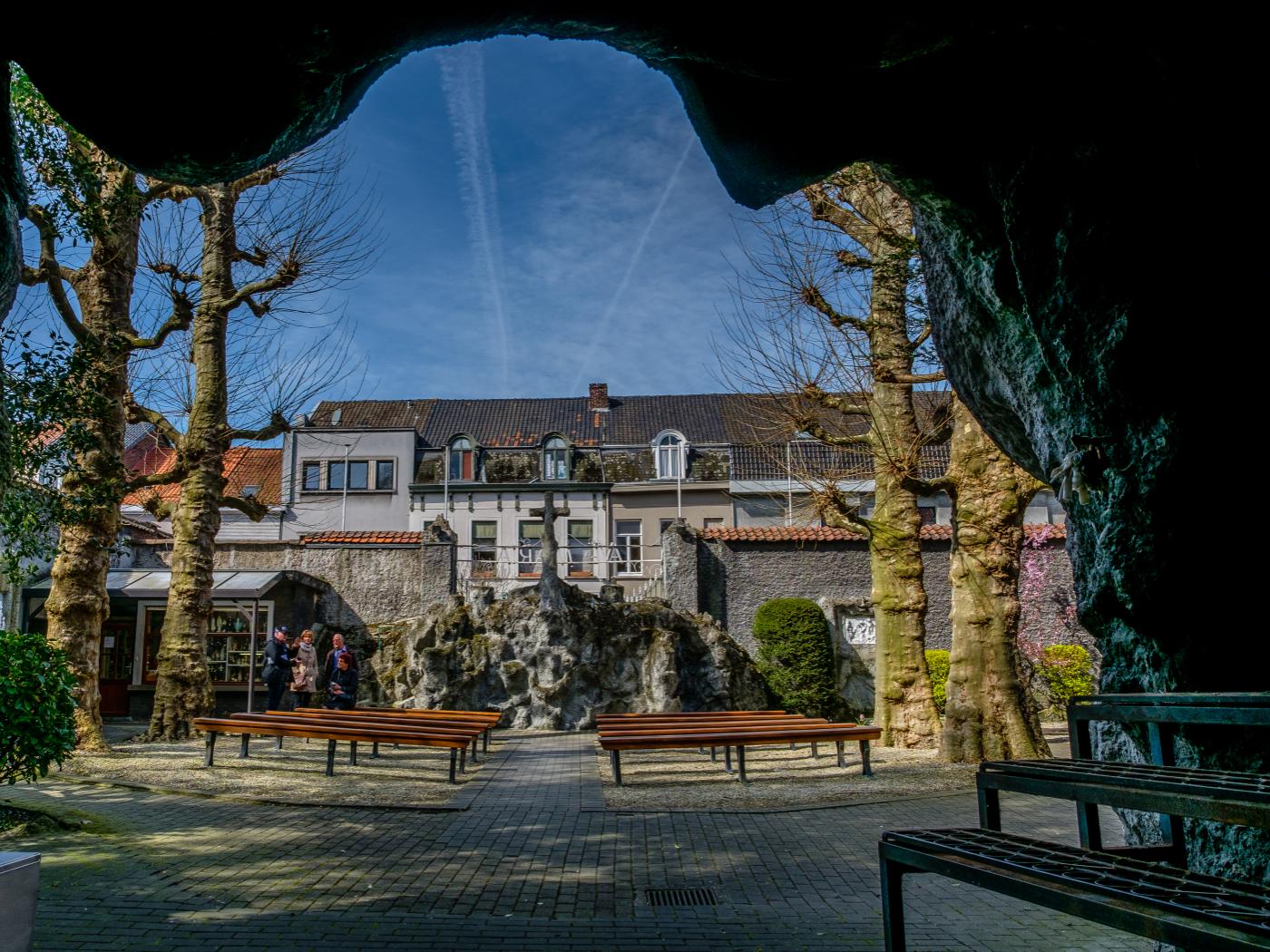Hidden gems
The international rose garden
The rose garden (Rozentuin) is located in the historic green environment of 't Hoge Castle Park. This park, which occupies over 3 ha, is more than 175 years old and is home to several remarkable trees. In 1959, a section of the park was arranged as a rosarium. The rose garden comprises an experimental garden where more than a hundred new varieties of roses from European breeders are planted every year. There is also a demonstration garden with rose varieties that have proven to be successful and a historical garden that paints a picture of the rose's evolution through the centuries.

BAGGAERTSHOF
Baggaertshof was founded in 1638 by the Baggaert sisters, who built twelve small houses and a gatehouse intended for poor widows and unmarried women. Together with a chapel these small houses surround a rectangular inner courtyard. The founders and later their heirs decided who was taken in. 'Rules and ordinances' were established for the residents, who were obliged to return home early to ring the large bell. In the chapel, Saint Dympna was called upon to ward off madness and epilepsy. There has been a herb garden here for centuries. In 1981, a medicinal herb garden was planted by the 'Kruiden Medici working group', an association of pharmacists and doctors from Kortrijk. More than two hundred different herbs were planted. Baggaertshof is a listed monument.
More info: Baggaertshof

ST. ANTHONY'S CHURCH AND THE LOURDES CAVE
Kortrijk's population grew significantly in the nineteenth century. Therefore there was a need for new parish churches. The Passionist Fathers settled at the Veemarkt where they founded a monastery, school and St. Anthony's Church (Sint-Antoniuskerk) (1873). The church became a popular place for confession in Kortrijk. This listed building was built in Neo-Romanesque style.
Brother Isidore was a figure that speaks to the imagination. When he ended up in the area around the Veemarkt in 1912, his health was poor. Therefore in 1913 (after being a chef for a year) he was assigned the less strenuous job of porter. He tried to help everyone who came to him in the First World War and was assigned the nickname 'the Good Brother’. Brother Isidore died in 1916, but he also continued to inspire people after his death. In 1952, people lined the streets when the body of Brother Isidore was transported to the new tomb in St. Anthony's Church. In 1984, he was declared blessed.
The Lourdes cave (Lourdesgrot) immediately catches the eye of most visitors. The copy in the Veldstraat was inaugurated on 11 February 1908 by Monsignor Waffelaert, on the occasion of the fiftieth anniversary of the first apparition of Mary in Lourdes. Since then a visit to St. Anthony's Church often concludes with a moment of reflection in the Lourdes cave, an oasis of tranquillity in the bustling city.
More info: Sint-Antoniuskerk
Location: Wandelingstraat 33
Open: Every day from 7.30 a.m. to 6 p.m. Between 1 November and 1 April open until 5 p.m.

GOD'S VAULT
n a side chapel of St. Martin's church you can enter 'God's Vault' (Kelderke Gods). It is a place that many pilgrims visited (and still do), ‘serving’ to guard against any adversity and sickness, to pray for support. There are letters with messages such as 'Hopefully my son will return safe and well from his travels', and people light candles there. Until recently even more people used to visit: they could be blessed with a dozen relics, receive a blessed cake and a medal or ribbon that was worn close to the ailing part of the body.
There was already talk of this unique place of devotion in 1413. A cave of sorts was created underneath the high altar, in which the scene of the burial was presented. Karel Delbaere from Kortrijk carved it in 1894, after the previous group sculpture had been destroyed by fire. Many beguines kept watch here to help people, comfort them and offer encouragement. There is a statue of Mary, because she is 'the mother of sorrows'. Sister-beguine Augusta was one of the greatest supporters of the 'God's Vault'.
Location: Sint-Maartenskerkstraat
Open: weekdays from 9 a.m. to 6 p.m., Saturday and Sunday from 10 a.m. to 6 p.m. Between 1 October and 31 March open until 5 p.m. No visits are permitted during church services.
Did you know: Beguine Augusta Seurinck was the last beguine to attend the 'God's Vault' every day until her death in 1979?

MIRACLE STATUE OF OUR LADY OF GROENINGE
The story of this miracle statue tells us: 'The Statue of Maria of Groeninge, famous for many miracles was found in a wood in 1281 by Pope Martin IV, and was given to Beatrice, Countess of Flanders in the year 1285 who brought it to Kortrijk after a pilgrimage to Rome.'
The legend goes that Countess Beatrice brought the statue back from a pilgrimage to Rome. She apparently received it from the Pope. This is doubtful because other accounts of her life do not mention anything about a pilgrimage to Rome. It is still a great story. This beautiful 13th century gothic ivory statue can be seen in St. Michael's Church. A small replica is also on display in Kortrijk 1302. The link between the statue and the Battle of the Golden Spurs is not insignificant either. Before the battle the Flemish troops apparently called on the statue of Maria with the child. Their prayers were heard and the Flemish troops defeated the French cavalry. Since then this magnificent sculpture has been referred to as a 'miracle statue'. Although there is no assurance that the statue was already in Kortrijk at the time.
